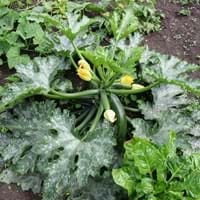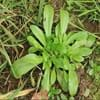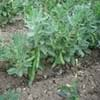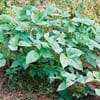Origin
America
Central America, South America
Types
Not Available
Bush Beans, Pole Beans
Number of Varieties
Not Available
Habitat
agricultural areas
Cultivated Beds
USDA Hardiness Zone
Not Available
Not Available
AHS Heat Zone
Not Available
Not Available
Sunset Zone
Not Available
A1, A2, A3, H1, H2, 1a, 1b, 2a, 2b, 3a, 3b, 4, 5, 6, 7, 8, 9, 10, 11, 12, 13, 14, 15, 16, 17, 18, 19, 20, 21, 22, 23, 24
Habit
Bushy, Evergreen
Vining/Climbing
Flower Color
Lavender
Lavender
Flower Color Modifier
Bicolor
Bicolor
Fruit Color
Purple, Black
Purple
Leaf Color in Spring
Green
Green, Purple
Leaf Color in Summer
Green
Green
Leaf Color in Fall
Green
Green
Leaf Color in Winter
Green
Not Available
Leaf Shape
Heart shaped, toothed with three to five lobes
Oval
Plant Season
Not Available
Spring, Summer, Fall
Sunlight
Full Sun
Full Sun
Type of Soil
Loam, Moist, Well drained
Loam, Sand
The pH of Soil
Acidic, Neutral, Alkaline
Neutral, Alkaline
Soil Drainage
Well drained
Well drained
Bloom Time
Indeterminate
Indeterminate
Tolerances
Drought, Pollution, Shade areas, Soil Compaction
Drought
Where to Plant?
Ground
Container, Ground, Pot
How to Plant?
Seedlings
Seedlings
Plant Maintenance
Medium
Medium
Watering Requirements
Allow soil to be completely dry in between waterings, Do not water excessively
Do Not over Water, Requires regular watering, Water evenly
In Summer
Lots of watering
Lots of watering
In Spring
Moderate
Moderate
In Winter
Average Water
Average Water
Soil pH
Acidic, Neutral, Alkaline
Neutral, Alkaline
Soil Type
Clay, Loam, Sand
Loam, Sand
Soil Drainage Capacity
Well drained
Well drained
Sun Exposure
Full Sun
Full Sun
Pruning
cut main flower spike, Proper mowing practices are necessary, Remove damaged fruit
Remove damaged leaves, Remove dead branches, Remove dead leaves
Fertilizers
Balanced liquid fertilizer every 4 weeks, Compost
5-10-10 fertilizer
Pests and Diseases
Bacterial Stem Rot, Mildew, Red blotch, Ring Rot, White spots
Alternaria Leaf Spot, Anthracnose, Aphids, Armyworm, Bacterial Blight
Plant Tolerance
Shade areas, Shallow soil, Soil Compaction
Drought
Flower Petal Number
Single
Single
Fragrant Bark/Stem
Yes
No
Foliage Texture
Medium
Coarse
Foliage Sheen
Matte
Matte
Self-Sowing
Not Available
Yes
Attracts
Leafminer, Mice, Not Available, Rodents
Not Available
Allergy
Sore Throat, Stomach pain
no allergic reactions
Aesthetic Uses
Ornamental use
Not Used For Aesthetic Purpose
Beauty Benefits
Anti-ageing, Remove blemishes
Beautiful Skin
Environmental Uses
Fixes Nitrogen, Food for animals
Fixes Nitrogen
Medicinal Uses
Antibacterial, Antioxidants, Detoxification, Rich in Potassium, Weight loss
Cancer, Diuretic, Homeopathy, Hypotensive, Miscellany
Part of Plant Used
Flowers, Fruits
Leaves, Seedpod, Seeds
Other Uses
Cattle Fodder, Culinary use, Used as a laxative
Used for making brown dye, Used in biomass, Used in in reviving woollen fabrics
Used As Indoor Plant
No
Yes
Used As Outdoor Plant
Yes
Yes
Garden Design
Container, Edible, Herb, Vegetable
Container, Edible, Herb, Vegetable, Vine
Botanical Name
Cucurbita pepo
PHASEOLUS vulgaris 'Purple King'
Common Name
Zucchini, courgette
String bean, Field bean, French bean
In Hindi
तोरी
String Bean
In French
Courgette
Haricot vert
In Spanish
calabacín
String Bean
In Greek
κολοκύθι
Αμπελοφάσουλο
In Portuguese
abobrinha
Feijão de corda
In Polish
Kabaczek
Fasolka szparagowa
In Latin
zucchini
Gloria Bean
Phylum
Magnoliophyta
Magnoliophyta
Class
Magnoliopsida
Magnoliopsida
Family
Cucurbitaceae
Fabaceae
Genus
Cucurbita
Phaseolus
Clade
Not Available
Angiosperms, Eudicots, Rosids
Tribe
Not Available
Phaseoleae
Subfamily
Not Available, Solanoideae
Faboideae
Number of Species
Not Available
Not Available
Season and Care of Zucchini and String Bean
Season and care of Zucchini and String Bean is important to know. While considering everything about Zucchini and String Bean Care, growing season is an essential factor. Zucchini season is Not Available and String Bean season is Not Available. The type of soil for Zucchini is Loam, Moist, Well drained and for String Bean is Loam, Sand while the PH of soil for Zucchini is Acidic, Neutral, Alkaline and for String Bean is Neutral, Alkaline.
Zucchini and String Bean Physical Information
Zucchini and String Bean physical information is very important for comparison. Zucchini height is 60.00 cm and width 30.00 cm whereas String Bean height is 210.00 cm and width 60.00 cm. The color specification of Zucchini and String Bean are as follows:
Zucchini flower color: Lavender
Zucchini leaf color: Green
String Bean flower color: Lavender
- String Bean leaf color: Green and Purple
Care of Zucchini and String Bean
Care of Zucchini and String Bean include pruning, fertilizers, watering etc. Zucchini pruning is done cut main flower spike, Proper mowing practices are necessary and Remove damaged fruit and String Bean pruning is done Remove damaged leaves, Remove dead branches and Remove dead leaves. In summer Zucchini needs Lots of watering and in winter, it needs Average Water. Whereas, in summer String Bean needs Lots of watering and in winter, it needs Average Water.





